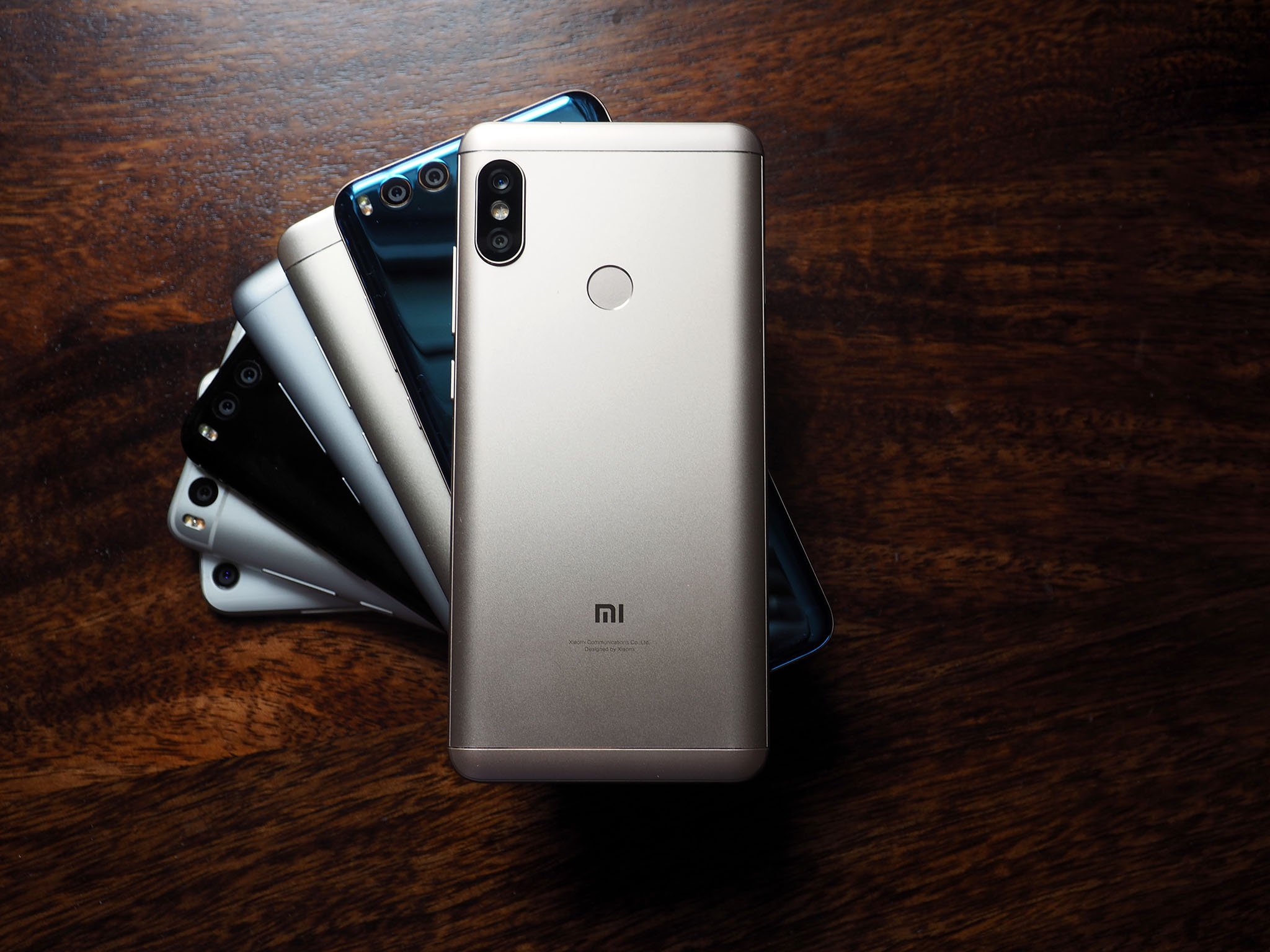Xiaomi Redmi Note 5 Pro benchmarks: Putting the Snapdragon 636 to the test

Xiaomi unveiled the Redmi Note 5 Pro earlier this week in India, and among its many highlights is the fact that the phone is the first to be powered by Qualcomm's Snapdragon 636 platform. Like the Snapdragon 660, the Snapdragon 636 is built on the 14nm node and brings Kryo cores to the mid-range category, with the chipset featuring eight Kryo 260 cores in a 4 + 4 cluster.
The Kryo 260 leverages four semi-custom Cortex A73 cores clocked at 1.8GHz, along with four semi-custom Cortex A53 energy-efficient cores at 1.6GHz, Adreno 509 GPU, and Qualcomm's X12 LTE modem with up to 600Mbps downlink. The Cortex A73 cores are some of the fastest available today, and as such the Redmi Note 5 Pro offers a noticeable uptick in performance over the likes of the Redmi Note 5 and other Xiaomi phones in the budget segment.
In fact, there isn't a phone in the budget segment that comes close to the Redmi Note 5 Pro in terms of sheer performance, as we'll see from the benchmarks. I compared the Redmi Note 5 Pro to the Redmi Note 5, which shares the same Snapdragon 625 platform as its predecessor. I also included scores from older devices, including the Snapdragon 650-based Redmi Note 3, which has two Cortex A72 cores.
The higher-performance Cortex A72 cores give the Snapdragon 650 a lead in CPU-intensive tasks, but the 28nm design doesn't really offer the same levels of battery efficiency as the 14nm chipsets. And to provide an overview of just how competitive the Snapdragon 636 platform really is, I included benchmarks from the Snapdragon 835-based Mi 6, the Snapdragon 821-based Mi 5s, and the Snapdragon 820-based Mi 5. The Snapdragon 660-toting Mi Note 3 rounds off the list of devices included in the test, and it serves as a baseline for the results.
All seven devices are running MIUI, but the platform version is different — the Mi 5, Mi 5s, and Redmi Note 3 are on Android 6.0.1 Marshmallow, and the rest of the devices are on Android 7.1.1 Nougat.
Before we begin: The Redmi Note 5 Pro has received the stable 9.2.4.0 build of MIUI 9, so I updated the scores after running the benchmarks on the stable build and added Geekbench, GFXBench, and 3DMark.
Xiaomi Redmi Note 5 Pro benchmarks
AnTuTu
AnTuTu Benchmark v7.0.4
Be an expert in 5 minutes
Get the latest news from Android Central, your trusted companion in the world of Android
| Device | Overall score |
|---|---|
| Xiaomi Redmi Note 5 Pro (SD636) | 112649 |
| Xiaomi Mi Note 3 (SD660) | 139140 |
| Xiaomi Redmi Note 5 (SD625) | 77236 |
| Xiaomi Redmi Note 3 (SD650) | 90539 |
| Xiaomi Mi 6 (SD835) | 187793 |
| Xiaomi Mi 5s (SD821) | 157090 |
| Xiaomi Mi 5 (SD820) | 128339 |
AnTuTu Benchmark v7.0.4
| Device | CPU | GPU | UX | Memory |
|---|---|---|---|---|
| Xiaomi Redmi Note 5 Pro (SD636) | 55347 | 21162 | 29574 | 6566 |
| Xiaomi Mi Note 3 (SD660) | 65571 | 30348 | 35569 | 7652 |
| Xiaomi Redmi Note 5 (SD625) | 38270 | 12749 | 20432 | 5335 |
| Xiaomi Redmi Note 3 (SD650) | 43001 | 17452 | 25237 | 4849 |
| Xiaomi Mi 6 (SD835) | 63731 | 71994 | 42303 | 9765 |
| Xiaomi Mi 5s (SD821) | 53281 | 64072 | 32554 | 7183 |
| Xiaomi Mi 5 (SD820) | 48261 | 43162 | 30493 | 6423 |
Xiaomi faithful have been relying on AnTuTu for several years now to gauge the overall performance. The benchmark isn't a reliable indicator of how good a device is to use on a day-to-day basis, but AnTuTu maintains a leaderboard that gives us an idea of where a particular phone ranks in the overall scheme of things.
With a score of 112649, the Redmi Note 5 Pro is miles ahead of any other device in the budget segment, with the Snapdragon 625-based Redmi Note 5 posting a score of 77236. The high score is down to the semi-custom Cortex A73 cores, which elevate the overall performance of the device.
Geekbench
Geekbench 4.0
| Device | Single-core | Multi-core |
|---|---|---|
| Xiaomi Redmi Note 5 Pro (SD636) | 1323 | 4896 |
| Xiaomi Mi Note 3 (SD660) | 1610 | 5803 |
| Xiaomi Redmi Note 5 (SD625) | 860 | 4292 |
| Xiaomi Redmi Note 3 (SD650) | 1366 | 2560 |
| Xiaomi Mi 6 (SD835) | 1921 | 6278 |
| Xiaomi Mi 5s (SD821) | 1733 | 4337 |
| Xiaomi Mi 5 (SD820) | 1489 | 3348 |
Geekbench 4.0 includes CPU tests that are modeled after real-world usage, allowing you to get an overview of how a processor handles day-to-day tasks, including multi-core performance. The Redmi Note 5 Pro pulls ahead of the standard Note 5, and comes close to the scores posted by the Mi Note 3.
Basemark
Basemark OS II
| Device | Overall | Graphics | Memory | System | Web |
|---|---|---|---|---|---|
| Xiaomi Redmi Note 5 Pro (SD636) | 2020 | 1621 | 2351 | 4274 | 1023 |
| Xiaomi Mi Note 3 (SD660) | 2430 | 2296 | 3029 | 5083 | 987 |
| Xiaomi Redmi Note 5 (SD625) | 1259 | 1020 | 1022 | 3234 | 746 |
| Xiaomi Redmi Note 3 (SD650) | 1410 | 1547 | 1580 | 1946 | 831 |
| Xiaomi Mi 6 (SD835) | 3557 | 6227 | 3509 | 5712 | 1283 |
| Xiaomi Mi 5s (SD821) | 2323 | 4752 | 1628 | 3466 | 1086 |
| Xiaomi Mi 5 (SD820) | 2053 | 3956 | 1570 | 3050 | 939 |
Basemark OS II is a system-level benchmarking tool that gives a high-level overview of a device's performance. The suite consists of an array of tests that gauge the system, internal and external memory, graphics, and web browsing performance.
Basemark Web 3.0
| Device | Score |
|---|---|
| Xiaomi Redmi Note 5 Pro (SD636) | 138.71 |
| Xiaomi Mi Note 3 (SD660) | 152.8 |
| Xiaomi Redmi Note 5 (SD625) | 98.81 |
| Xiaomi Redmi Note 3 (SD650) | 91.92 (without WebGL 2.0) |
| Xiaomi Mi 6 (SD835) | 239.92 |
| Xiaomi Mi 5s (SD821) | 116.86 (without WebGL 2.0) |
| Xiaomi Mi 5 (SD820) | 89.04 (without WebGL 2.0) |
Basemark Web 3.0 offers a set of over 20 web benchmarks that measure browser performance and graphics, including page load responsiveness, along with CSS, and HTML5 capabilities. Once again, we can see the Redmi Note 5 Pro holding its own next to the Mi Note 3.
GFXBench
GFXBench 4.0 Manhattan 3.1 (ES3.1)
| Device | FPS |
|---|---|
| Xiaomi Redmi Note 5 Pro (SD636) | 10 |
| Xiaomi Mi Note 3 (SD660) | 15 |
| Xiaomi Redmi Note 5 (SD625) | 6.2 |
| Xiaomi Redmi Note 3 (SD650) | 8.8 |
| Xiaomi Mi 6 (SD835) | 38 |
| Xiaomi Mi 5s (SD821) | 31 |
| Xiaomi Mi 5 (SD820) | 21 |
GFXBench 4.0 1080p Car Chase Offscreen (ES3.1)
| Device | FPS |
|---|---|
| Xiaomi Redmi Note 5 Pro (SD636) | 6.1 |
| Xiaomi Mi Note 3 (SD660) | 8.8 |
| Xiaomi Redmi Note 5 (SD625) | 3.5 |
| Xiaomi Redmi Note 3 (SD650) | 5.3 |
| Xiaomi Mi 6 (SD835) | 25 |
| Xiaomi Mi 5s (SD821) | 19 |
| Xiaomi Mi 5 (SD820) | 14 |
GFXBench 4.0 T-Rex (ES2.0)
| Device | FPS |
|---|---|
| Xiaomi Redmi Note 5 Pro (SD636) | 34 |
| Xiaomi Mi Note 3 (SD660) | 50 |
| Xiaomi Redmi Note 5 (SD625) | 18 |
| Xiaomi Redmi Note 3 (SD650) | 29 |
| Xiaomi Mi 6 (SD835) | 60 |
| Xiaomi Mi 5s (SD821) | 60 |
| Xiaomi Mi 5 (SD820) | 53 |
GFXBench is a benchmark that tests the graphics performance of a particular device. Here we see the Snapdragon 8xx series devices take the lead by some margin thanks to the vastly increased number of ALUs in the Adreno 530 and 540 (256 vs. 96 in SD625). The Adreno 512 in the Snapdragon 660 fares better, as does the Adreno 509 in the Snapdragon 636.
3DMark
3DMark Sling Shot Extreme (ES3.1)
| Device | Overall | Graphics | Physics |
|---|---|---|---|
| Xiaomi Redmi Note 5 Pro (SD636) | 950 | 812 | 2333 |
| Xiaomi Mi Note 3 (SD660) | 1362 | 1192 | 2715 |
| Xiaomi Redmi Note 5 (SD625) | 464 | 380 | 2089 |
| Xiaomi Redmi Note 3 (SD650) | 818 | 729 | 1426 |
| Xiaomi Mi 6 (SD835) | 3249 | 3677 | 2308 |
| Xiaomi Mi 5s (SD821) | 1994 | 2233 | 1451 |
| Xiaomi Mi 5 (SD820) | 1858 | 2046 | 1406 |
Chrome
Google Octane 2.0
| Device | Score |
|---|---|
| Xiaomi Redmi Note 5 Pro (SD636) | 8647 |
| Xiaomi Mi Note 3 (SD660) | 8948 |
| Xiaomi Redmi Note 5 (SD625) | 4750 |
| Xiaomi Redmi Note 3 (SD650) | 9068 |
| Xiaomi Mi 6 (SD835) | 10727 |
| Xiaomi Mi 5s (SD821) | 9440 |
| Xiaomi Mi 5 (SD820) | 7974 |
JetStream 1.1
| Device | Score |
|---|---|
| Xiaomi Redmi Note 5 Pro (SD636) | 44.748 |
| Xiaomi Mi Note 3 (SD660) | 52.293 |
| Xiaomi Redmi Note 5 (SD625) | 25.845 |
| Xiaomi Redmi Note 3 (SD650) | 48.101 |
| Xiaomi Mi 6 (SD835) | 62.854 |
| Xiaomi Mi 5s (SD821) | 54.003 |
| Xiaomi Mi 5 (SD820) | 43.907 |
Kraken 1.1
| Device | Total in ms (lower is better) |
|---|---|
| Xiaomi Redmi Note 5 Pro (SD636) | 4785.1 |
| Xiaomi Mi Note 3 (SD660) | 3586.4 |
| Xiaomi Redmi Note 5 (SD625) | 9897.6 |
| Xiaomi Redmi Note 3 (SD650) | 4706.4 |
| Xiaomi Mi 6 (SD835) | 3114.6 |
| Xiaomi Mi 5s (SD821) | 2630.4 |
| Xiaomi Mi 5 (SD820) | 3390.3 |
We've seen phones in this segment field increasingly powerful hardware over the last two years, and the Snapdragon 636 is a generational leap forward. Essentially, the Snapdragon 636 is an underclocked version of the Snapdragon 660 — the chipset offers massive gains over the outgoing Snapdragon 625, and should make budget phones that much more exciting.
With the Redmi Note 5 Pro priced at ₹13,999 ($215), Xiaomi is once again offering incredible value in this category. The phone will go up for sale in India starting February 22 on Flipkart, and is available in two variants — a model with 4GB of RAM and 64GB of storage for ₹13,999 ($215), and a version with 6GB of RAM and 64GB of internal memory for ₹16,999 ($260).

Harish Jonnalagadda is Android Central's Senior Editor overseeing mobile coverage. In his current role, he leads the site's coverage of Chinese phone brands, networking products, and AV gear. He has been testing phones for over a decade, and has extensive experience in mobile hardware and the global semiconductor industry. Contact him on Twitter at @chunkynerd.
